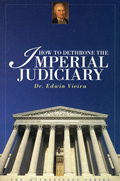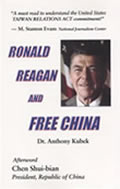CONNECTING THE DOTS: FROM UNITED NATIONS TO YOUR STATE GOVERNMENT
by
Tom DeWeese
May 6, 2013
NewsWithViews.com
Proponents of Sustainable Development constantly tell us that their plans are just local. And they deride those who accuse them of imposing an international agenda. Kooks. Fringe Fanatics. Conspiracy Theorists. These are just some of the labels they pin on those fighting to expose Agenda 21. Moreover, they sarcastically ask, “how can an obscure twenty year old document be a threat to local policy? Tsk Tsk.”
Well, let’s take just one example and follow it through the process. Let’s get acquainted with the Earth Charter. If Agenda 21 is the blue print – the Earth Charter is the manifesto.
Below is a report, provided, in part, by Christopher Woodwardon detailing the Earth Charter, its history and its purpose. He writes...
“...The Earth Charter is an international declaration, which calls for “building a just, sustainable, and peaceful global society for the 21st century.” It is a soft law document as opposed to a treaty (just like Agenda 21), backed by the United Nations. It has been launched onto the world stage through a UN operation called the Earth Charter Initiative. In its name, the UN is quietly building a grass- roots movement made up of Non-governmental organizations (NGOs) and individuals to bring its ideas and principles into national government and local communities. This is being carried out through various Task Force groups and volunteer networks of supporters who are working to implement the charter into different areas of life, including business, education and religion.”
The Fundamental Message of the Earth Charter
Woodwardon goes on to explain, “The Earth Charter is around 2400 words long and contains sixteen principles. The preamble states that the world is becoming “increasingly interdependent and fragile” and calls for a “sustainable global society.” It states that the dominant patterns of production and consumption are causing “environmental devastation” and warns about overpopulation, the widening gap between rich and poor, the extinction of species and depletion of the world’s resources.
It goes on to call for the emergence of a ‘global civil society’ and states that “our environmental, economic, political, social, and spiritual challenges are interconnected.”
The underlying philosophy of the Charter is a pagan one, whereby Mother Earth and nature are to be worshiped, and as such it opposes the Judeo-Christian belief that God is separate from his creation and man has dominion over the Earth,” says Woodwardon.
“This is the exact philosophy behind the purpose of Agenda 21, and in fact, the documents go hand in hand, much like the American Declaration of Independence and the U.S. Constitution are inseparable as our nation’s founding documents. One, the Declaration, provides the philosophy behind the nation, the other, the Constitution, outline the way it is to be implemented. So too are the Earth Charter and Agenda 21. One, the Earth Charter, describes the philosophy, and Agenda 21 describes how is will be achieved,” points out Woodwardon.
History of the Earth Charter
Concludes Woodwardon, “The idea of an Earth Charter originated out of the 1987 World Commission on Environment and Development, but the moves towards drafting the Earth Charter began in earnest in 1994 when Mikhail Gorbachev, as president of Green Cross International, and Maurice Strong, chairman of the Earth Council, joined forces to draft the earth charter as a civil society initiative, with funding from the government of the Netherlands. In late 1996 the Earth Charter Commission, co-chaired by Gorbachev and Strong was formed to oversee the drafting process, and a draft was presented at the Rio+5 Forum in 1997, where world leaders met to review their progress on the 1992 Rio Earth Summit.
The final text of the Earth Charter was agreed on at a meeting of the Earth Charter Commission at the UNESCO headquarters in Paris in March 2000, and the Charter was formally launched on June 29, 2000 at The Peace Palace in The Hague, the Netherlands.
Since its launch, over 4500 organizations have endorsed the Charter, including international bodies such as UNESCO and the World Conservation Union, the 2001 U.S. Conference on Mayors, various government bodies, faith-based groups and youth organizations.”
The Ark of Hope
The original copy of the Earth Charter has been placed in a specially constructed Ark of Hope, a 49 inch (124.5cm) by 32 inch (81.3cm) by 32" (81.3cm) wooden chest that is built to resemble the Biblical Ark of the Covenant, but contains occult symbolism. The Ark of Hope was launched by Steven C. Rockefeller at an event called For Love of Earth, a celebration of the Earth Charter that took place on 9 September 2001 at Shelburne Farms, Vermont. The Ark is taken on tour each year across parts of the world to promote the Earth Charter, visiting hundreds of schools and universities.
Implementation at the local level
So how is all of that a threat from local government. Let me guide you through three documents to connect the dots. The first, of course, is the Earth Charter. You can read it on the web. Consider carefully its full impact, if implemented in your community or in state laws.
The second document is the ICLEI Charter. It boldly states ICLEI’s “mission.” “To build and serve a worldwide movement of local governments to achieve tangible improvements in global sustainability with special focus on environmental conditions through cumulative local actions.” And then look at ICLEI’s statement of “Principles,” those goals it is organized to implement in its “cumulative local actions.” “The Association shall promote, and ask its individual members to adopt, the following EARTH CHARTER Principles to guide LOCAL action.” In other words, communities that join ICLEI for its local planning guidance are AGREEING TO ENFORCE THE EARTH CHARTER ON OUR HOME TOWN.
But, say your local officials, we aren’t imposing international policy – it’s all local. Well, consider the third document in this effort to connect the dots. This is taken from the government website of the state of Washington, Department of the Ecology. In reading it (available on the state’s official website) notice two things. First in paragraph 3, it quotes “Our Common Future.” This was the special report from the Brundtland Commission This was the 1987 UN Commission on Environmental and Development, chaired by Gro Harlem Brundland, Vice President of the World Socialist Party.
| Subscribe to the NewsWithViews Daily News Alerts! |
In that report the term Sustainable Development was first coined. And the report was the precursor to Agenda 21 and the Earth Charter. The Washington state government document describes the Earth Charter as a “reference document.” In other words, the Earth Charter is being used by the government of the state of Washington as a guideline for state environmental and development policy.
Can the dots be connected any more clearly? This is a direct link between UN international Agenda 21 policy and American state government. That state government, using the Earth Charter as a guideline, passes regulations down to the local communities to enforce environmental and development policy. That’s how it works in every federal, state and local policy today across the nation.


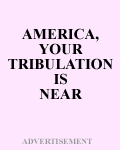
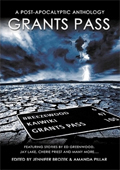


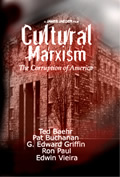





 Share
This Article
Share
This Article

